Fruits are generally seen as low-protein foods. However, they can provide a substantial amount for our daily nutritional needs! Protein-rich fruits, which are mostly tropical, highly nutritious fruits, can deliver up to 50-55 grams per 2000- 2500 calories, which is the recommended daily amount for adults. We have to keep in mind that fruits have a very high water content (dried fruits have a much higher protein content), which is why the protein content appears to be relatively low compared to “denser” foods. Fresh fruits provide nutrients and water in one.
Chimpanzees, for example, get most of their proteins from fruits and nuts: “The researchers stress that adult and juvenile male and female chimps in the park all still got most of their protein from fruits and nuts.” (Citation from a PNAS article on anthropology research over 20 years).
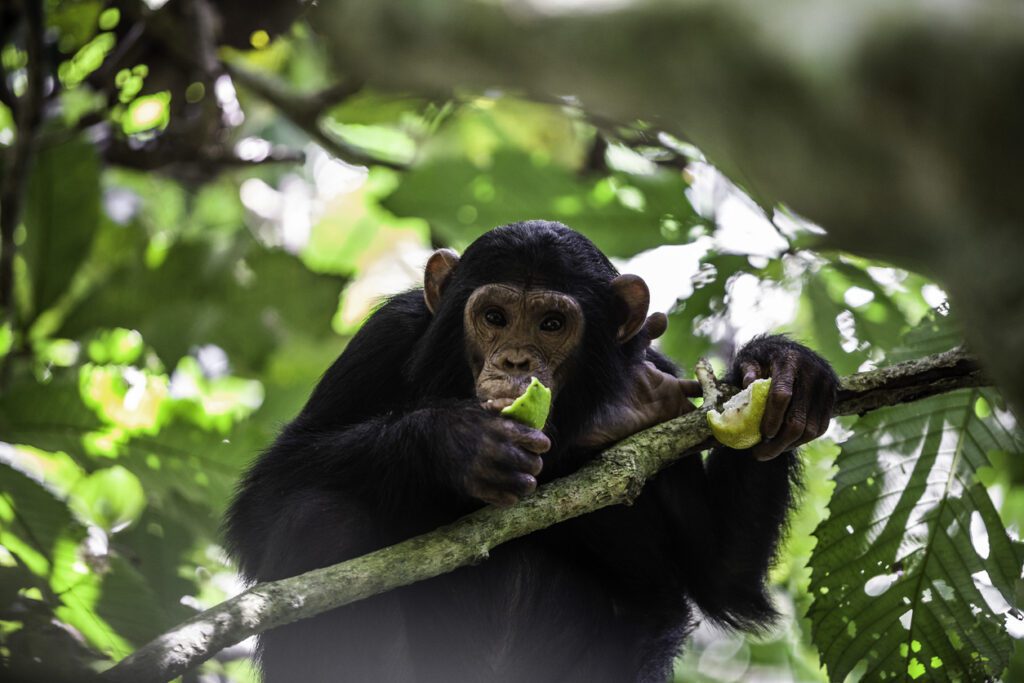
Read more here on how to get your protein from raw foods and fruits.
Protein in fruits – List
Here is an overview of the protein content in different types of fruits, of which the average is 1.5 grams per 100 grams.
Most tropical fruits contain more protein than fruits from colder climates, especially wild tropical fruits. The top 8 fruits for protein with their health benefit are described below the list.
| Fruit Type | Protein (g) |
|---|---|
| Durian | 1.4-3.5 |
| Guava | 2.6 |
| Cherimoya | 2.5 |
| Lucuma | 1.5-2.3 |
| Passion Fruit | 2.2 |
| Avocado | 2.0 |
| Açai berry | 1.9 |
| Jackfruit | 1.8 |
| Apricots | 1.4 |
| Dragon Fruit | 1.2 |
| Bananas | 1.1 |
| Cherries | 1.0 |
| Mangosteen | 1.0 |
| Starfruit | 1.0 |
| Blueberries | 0.9 |
| Oranges | 0.9 |
| Mango | 0.8 |
| Lychee | 0.8 |
| Plums | 0.7 |
| Limes | 0.7 |
| Strawberries | 0.7 |
| Papaya | 0.6 |
| Pears | 0.4 |
| Apples | 0.3 |
1. Durian
Durian (Durio zibethinus) contains 1.4 – 3.5 grams of protein per 100 g fruit. It is the fruit that can reach the highest protein content of all fruits measured. Its consistency is fleshy, rich, and highly satiating!
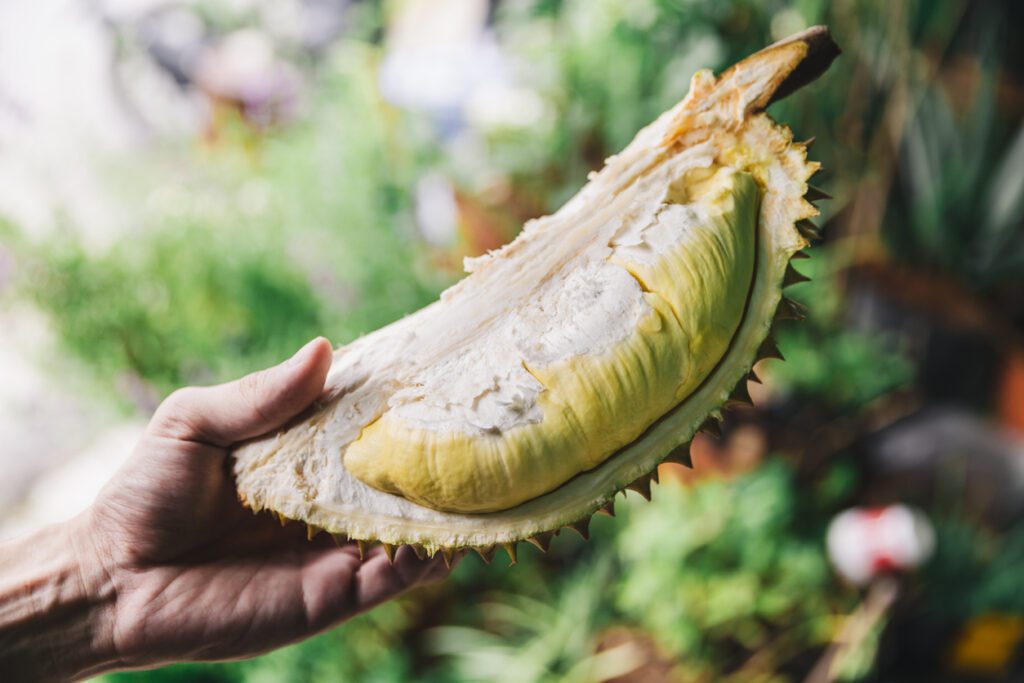
Durian is an important fruit in tropical Asia, and many argue it is the fruit for good health. Durian has a special flavor and smell due to its volatile sulfur components! The high sulfuric content, a unique feature of durian, is also a key feature that makes it so healthy! It is one reason why this fruit (the fruit, leaves, roots, and bark) is used as medicine by natives of tropical regions. Read more about the health benefits of sulfur here.
2. Guava
Guava (Psidium guajava) contains 2.6 grams of protein per 100 g of fruit. This fruit’s protein content is surprisingly high, as it is not of a very fleshy consistency. This tropical fruit offers you bioavailable amino acids and helps you get more protein on a high-raw diet in a delicious, natural way.
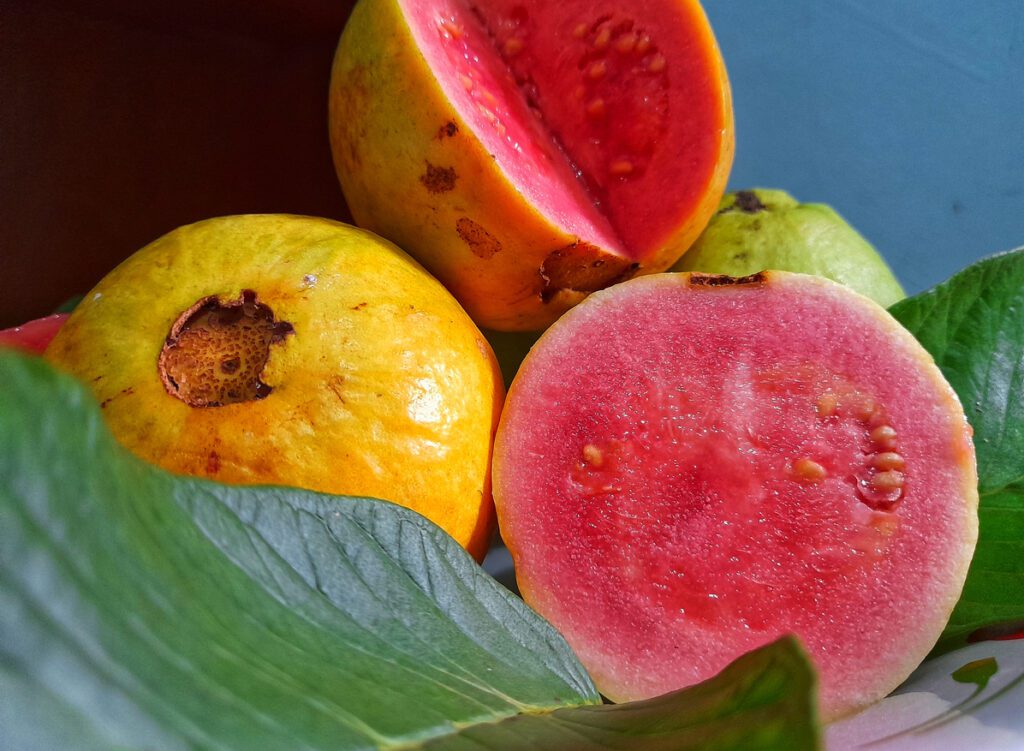
Besides the protein, guava is well-known for its calming and medicinal properties in Brazil. This is what I learned from locals: Goiaba juice is useful for calming down and deep sleeping. Further, the fruit itself helps with inflammatory pains in the intestinal tract (see here).
3. Passion Fruit
Passion fruit (Passiflora edulis) can contains up to 5.2 grams of protein per 100 g of fruit. The exceptionally high value might be due to its seed content. This is another tropical fruit originally from South America, but is known and appreciated for its delicious taste all over the world.
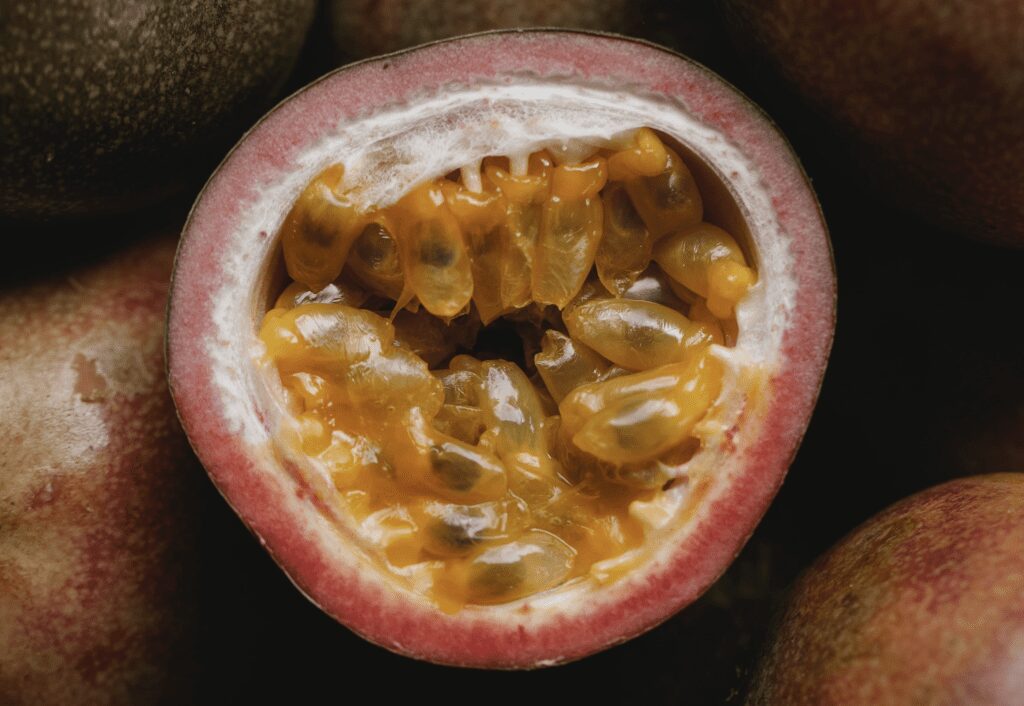
Passion fruit is consumed by birds, primates, and other mammals – an indication that it is optimal for humans, too. It is not surprising that passion fruit is known for its positive health benefits and nutritious properties. The fruit aids digestion, boosts immunity, and decreases inflammation.
4. Cherimoya
Cherimoya (Annona cherimola) contains around 2.5 grams of protein per 100 g of fruit. Besides being a healthy protein source, cherimoya offers incredible health benefits – like most tropical fruits do:
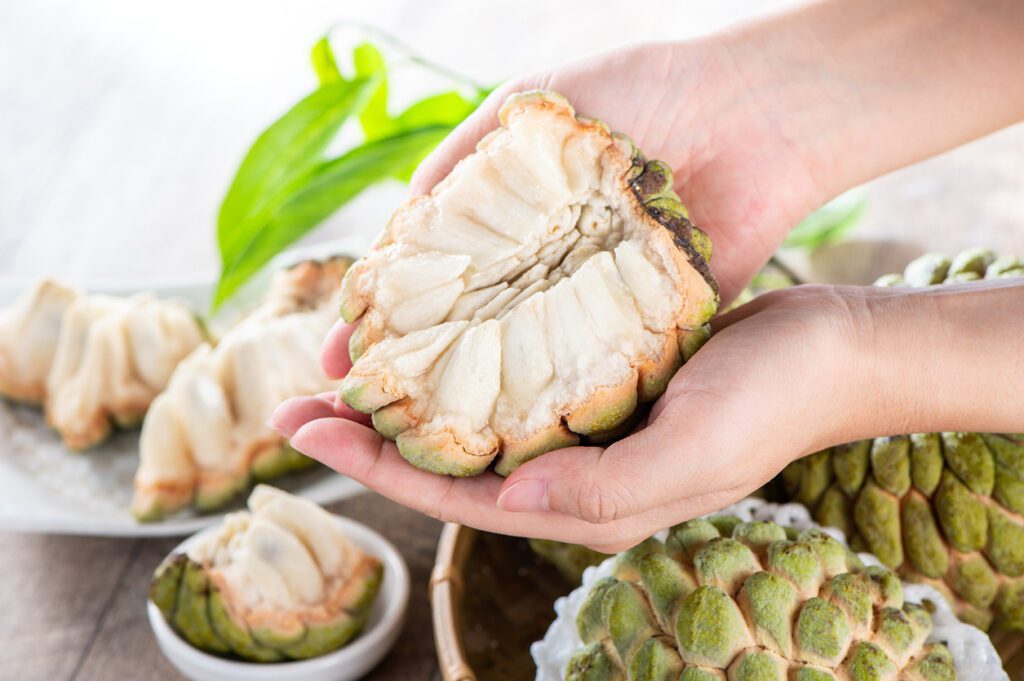
It has the typical anti-inflammatory properties and immune-boosting effects of exotic fruit. Besides, it is used in ethnomedicine in the Andean regions – and not surprisingly, in modern science is researched for all types of serious conditions (see example here)!
5. Lucuma / Sapote
Lucuma (Pouteria lucuma) contains around 2.5 grams of protein per 100 g of fruit. Lucuma is called a “superfruit”, because of its benefits for health and nutritional profile. But what is the reason behind the fruit being so healthy?

Because as a tropical fruit, lucuma has coevolved as a food source for primates! And, as tropical frugivores, the human body is adapted to eating a diet high in tropical fruit. In other words, lucuma offers exactly the nutrition we need. This incredible insight can be applied to most (if not all) edible tropical fruits! Read more here.
6. Açai
Açai (Euterpe oleracea) contains around 2 grams of protein per 100 g. Açai is a fatty, highly nutritious berry from the Amazon region. This means one açai-banana bowl contains around 6-7 grams – without the topping, which can contain seeds and add to the protein content.
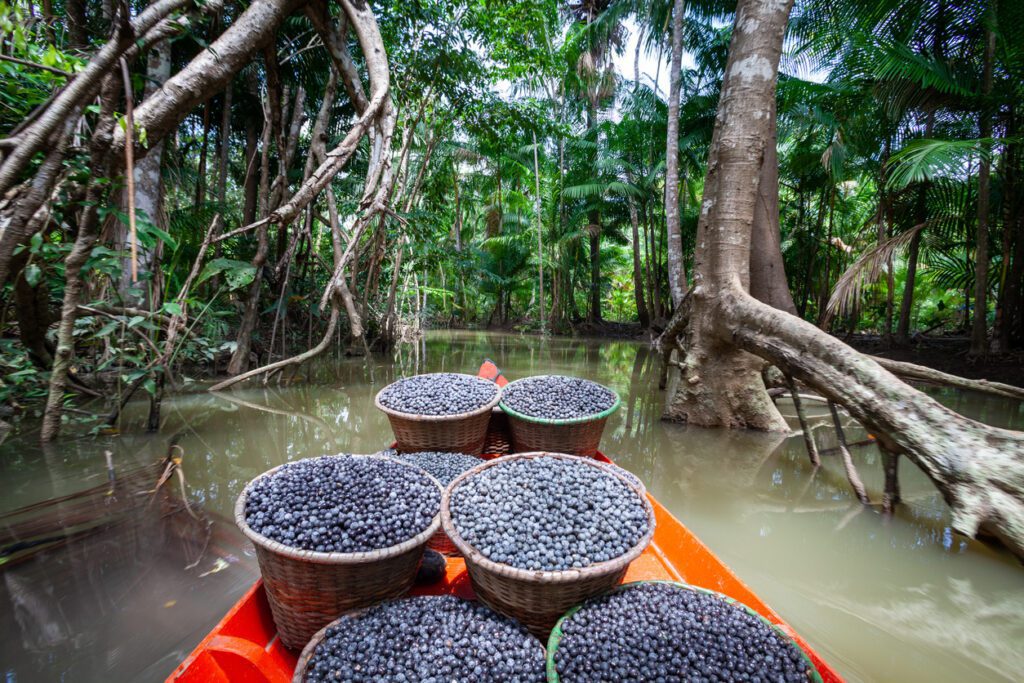
Açai has become more popular outside Brazil lately. It has been shown to be beneficial for neurological health!
7. Avocado
Avocados (Persea americana) contain around 4.6 grams of protein per 100 g. This exceptional value is not a surprise, because avocado is not a sweet fruit. It is a high-fat fruit, of which we usually eat less in weight.
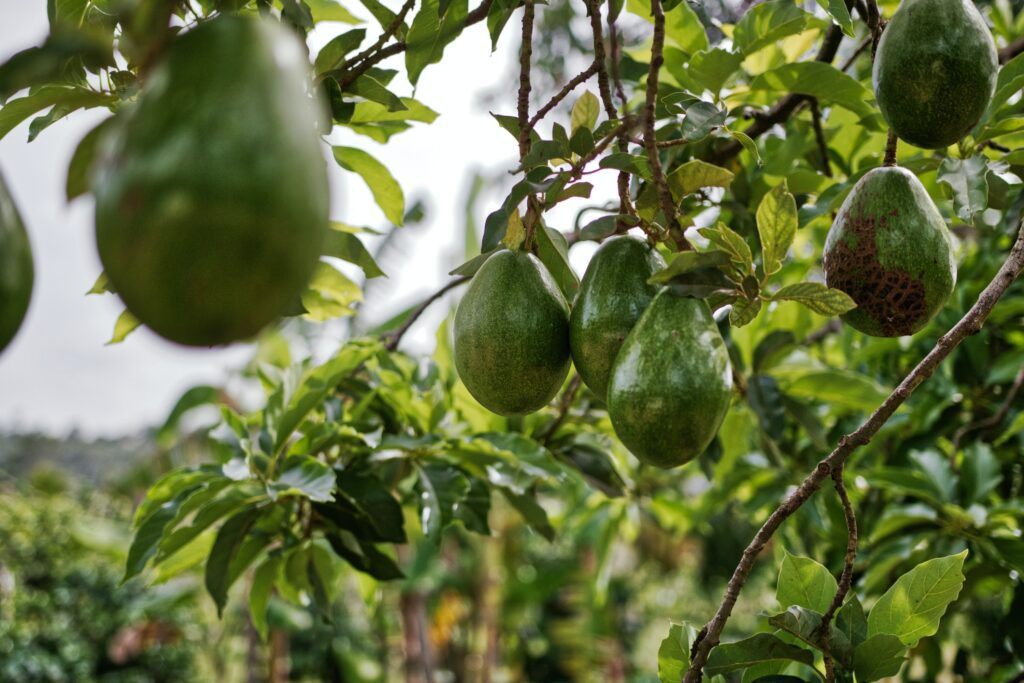
Avocado is special in many ways and certainly an interesting add to a raw diet or high-fruit diet nutritionally. However, many argue that the fruit is not to be consumed in large amounts due to its high Omega-6 content.
8. Apricots
Apricots (Prunus armeniaca) contain around 2.2 grams of protein per 100 g. Apricots are not tropical fruits, but conatin a good amount of protein: this is the famous exception to the rule, which deserves to be mentioned here!
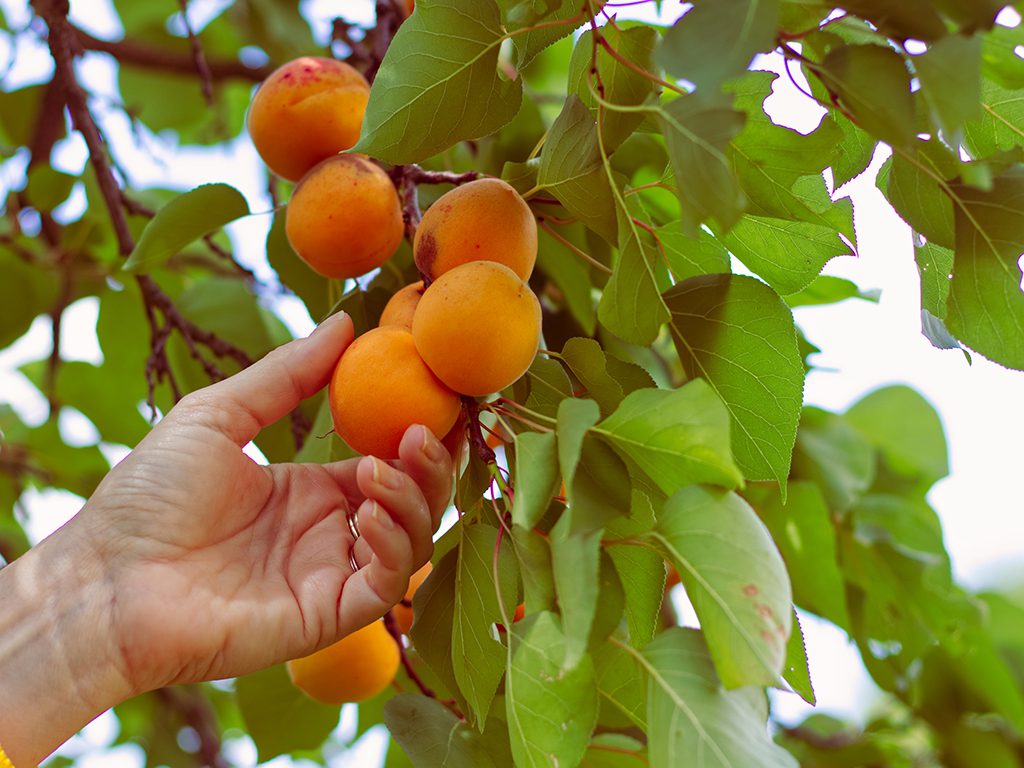
Apricots, like most temperate fruits, were hybridized and heavily bred to become edible and more palatable for humans (read more here).
Wild fruits and protein
Wild fruits contain more protein than modern cultivated ones!
We, humans, do not live in our natural habitat – which is tropical! Most of us do not have access to wild, ripe tropical fruits like our closest relatives, the chimpanzees! Wild fruits have a different nutritional profile than cultivated fruits and temperate fruits (which are all cultivated and hybridized): they contain more proteins, another carb composition, and more micronutrients:
“Humans clearly come from an evolutionary past in which hexose (fructose) – rather than sucrose-dominated fruits were consumed, and human digestive physiology should, therefore, be best adapted to a carbohydrate substrate similar to that of wild fruits. But, in addition, wild fruits differ in other respects from their cultivated counterparts. These include a high content of roughage – woody seeds, fibrous strands – as well as higher average protein levels, higher levels of many micronutrients … and , at times, considerable pectin.”
Kathrine Milton; 1999
This insight is another piece of the puzzle to understand how frugivores meet their nutritional needs!
Also, check out our superfruit series, and learn about their stunning health benefits and even medicinal effects:
- Açai
- Acerola
- Avocado
- Bananas
- Breadfruit
- Mangosteen
- Custard Apple
- Guava
- Durian
- Tropical Figs
- Rambutan
- Lychee
- Dragonfruit
- Papaya
- Mango
- Passionfruit
- Granadilla
- Soursop
- Starfruit
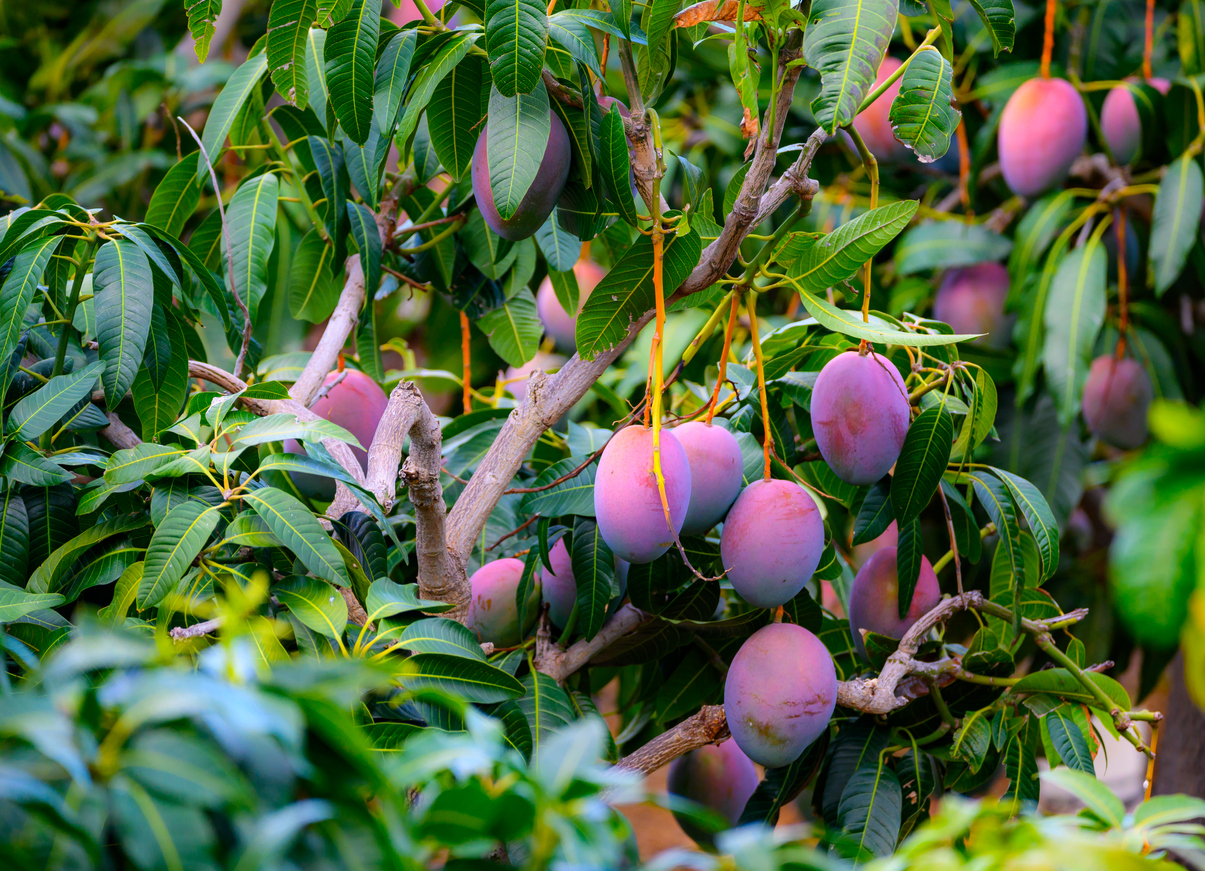
Learn more about the health benefits and role of tropical fruits in the human diet here.
References
- A Aziz, N. and Mhd Jalil, A. (2019a) ‘Bioactive compounds, nutritional value, and potential health benefits of indigenous durian (Durio Zibethinus Murr.): A Review’, Foods, 8(3), p. 96. doi:10.3390/foods8030096.
- Author unknown; Adult male chimps regularly eat meat, unlike other chimps (2013). Available at: https://www.pnas.org/post/journal-club/adult-male-chimps-regularly-eat-meat-unlike-other-chimps (Accessed: April 26, 2023).
- Eliza Tomoe Harada (no date) Goiaba, a fruta que é um bom remédio, Oficina das Ervas. Available at: https://www.oficinadeervas.com.br/conteudo/goiaba-a-fruta-que-e-um-bom-remedio (Accessed: 18 May 2023).
- ALNasser, M.N. and Mellor, I.R. (2022) “Neuroprotective activities of acai berries (Euterpe sp.): A Review,” Journal of Herbmed Pharmacology, 11(2), pp. 166–181. Available at: https://doi.org/10.34172/jhp.2022.21. (link)
- K. Milton, Nutritional characteristics of wild primate foods: Do the diets of our closest living relatives have lessons for us? Nutrition. 15, 488–498 (1999), doi:10.1016/s0899-9007(99)00078-7

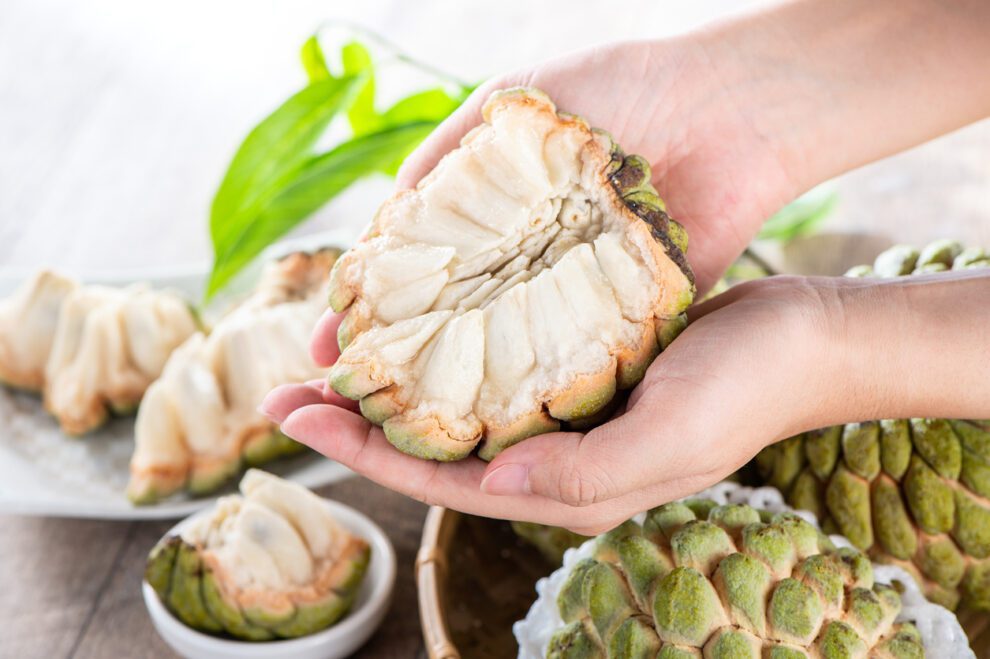
Add Comment